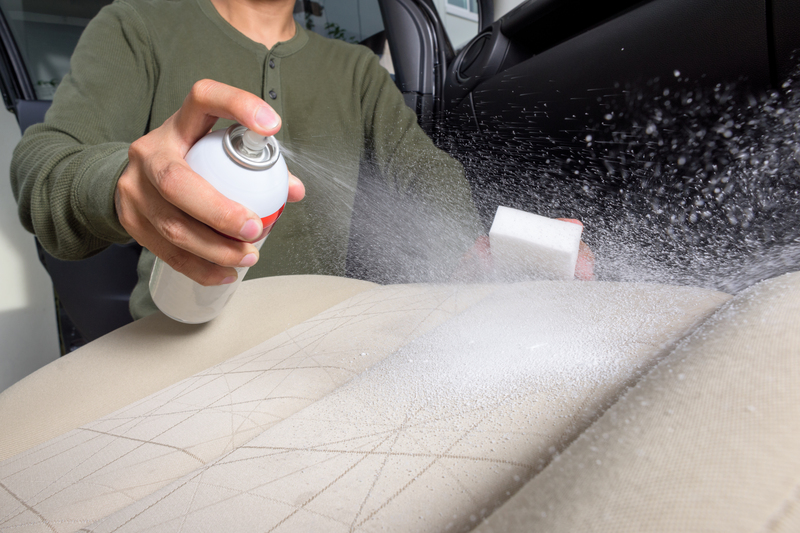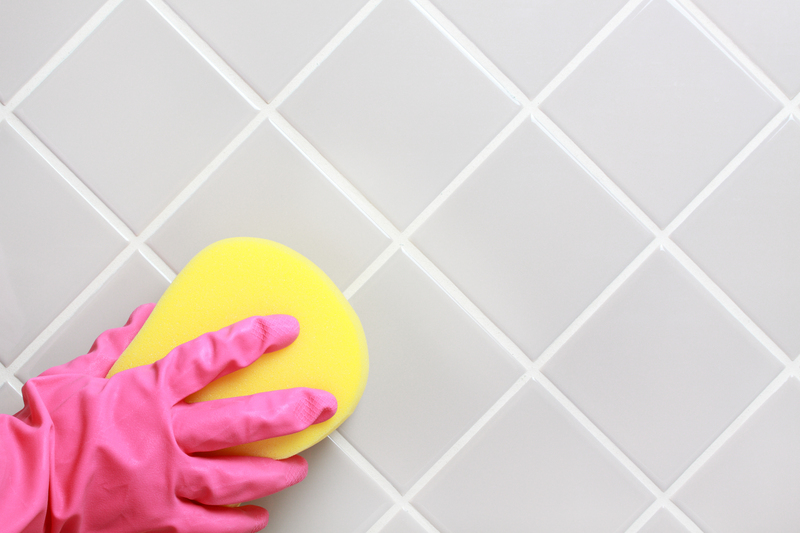The clean air revolution: Transforming indoor environments
Posted on 20/06/2025
The Clean Air Revolution: Transforming Indoor Environments
Clean indoor air is becoming a top priority in our modern world, and for a good reason. As we spend up to 90% of our time indoors, the quality of the air inside our homes, offices, schools, and public spaces is more impactful than we might realize. Today, a clean air revolution is underway, driven by technological innovation, growing health awareness, and the global pandemic's lessons. In this comprehensive article, we'll explore the transformation of indoor environments through improved air quality, the factors influencing indoor air, the benefits of clean air, and the best proactive strategies for individuals and organizations.
Understanding the Importance of Clean Indoor Air
Indoor air pollution often goes unnoticed. Unlike outdoor air pollution, its sources tend to be less visible, but its negative impact on health can be significant. Pollutants such as volatile organic compounds (VOCs), particulate matter (PM2.5), radon, mold spores, pollen, and even pathogens can linger in household and commercial interiors.
- According to the World Health Organization (WHO), poor indoor air quality contributes to over 3.8 million premature deaths annually.
- Children, seniors, and people with chronic health conditions are especially vulnerable to unhealthy indoor air.
Understanding and addressing indoor air quality (IAQ) is pivotal for public health, productivity, and well-being.

The Rise of the Clean Air Revolution
The clean air revolution refers to a broad movement and technological leap aiming to transform indoor environments by actively minimizing airborne contaminants. The pandemic accelerated this transformation, awakening greater public and professional interest in creating cleaner, safer interiors.
Key Drivers of the Clean Air Revolution
- Health Awareness: Increasing understanding of air-related diseases and the dangers of airborne transmission.
- Technological Innovation: Advanced filtration, smart sensors, and air purification technologies.
- Building Standards and Green Certifications: LEED, WELL, and other programs requiring higher IAQ standards.
- Remote Work and Lifestyle Changes: The shift to home-based workforces, which redefined indoor air priorities.
Technological Solutions Powering the Clean Air Movement
The rapid advancement of indoor air management is made possible by innovations such as:
- High-Efficiency Particulate Air (HEPA) Filters: HEPA filters are capable of removing at least 99.97% of airborne particles as small as 0.3 microns.
- UV-C Light Purification: Ultraviolet light systems deactivate bacteria, viruses, and mold spores, revolutionizing indoor space sanitation.
- Smart HVAC Systems: Intelligent climate control systems adapt ventilation rates depending on occupant density and pollution levels, enhancing energy efficiency and air cleanliness.
- Air Quality Monitors: Real-time sensing technology provides actionable data on particulates, CO2, VOCs, and more, empowering users to take immediate action.
- Natural Purifiers: Living walls and biophilic designs incorporate plants known to improve air quality, combining aesthetics with function.
The Science of Indoor Air Quality: More Than Just Clean Air
A healthy indoor environment encompasses more than just the absence of visible pollutants. It involves keeping multiple airborne risks in check. Here are the primary sources of indoor air contamination:
- Building Materials: VOCs and formaldehyde from paints, adhesives, furniture, and flooring materials.
- Household and Office Products: Aerosols, cleaning supplies, and personal care products can emit harmful chemicals.
- Outdoor Pollutants: Pollen, smog, and car exhaust can enter through doors, windows, and poorly sealed buildings.
- Mold and Moisture: Damp environments promote the growth of mold, leading to respiratory irritants and allergens.
- Human Activities: Cooking, smoking, and the use of heating systems all contribute to degraded air.
- Biological Agents: Viruses, bacteria, and pet dander are commonly found in crowded or poorly ventilated interiors.
The Invisible Threats: Why Indoor Pollutants Are Dangerous
Unlike outdoor air quality, indoor pollution is rarely visible or odorous. Yet its consequences can be severe. Research links chronic exposure with:
- Respiratory Issues: Asthma, bronchitis, and chronic obstructive pulmonary disease (COPD).
- Cardiovascular Problems: High blood pressure, heart attacks, and strokes.
- Decreased Cognitive Function: Headaches, reduced focus, and diminished productivity.
- Allergic Reactions: Watery eyes, sneezing, and skin irritations.
Improving air quality benefits not just physical health, but also emotional and cognitive well-being.
Clean Air Benefits: Why Transformation Matters
The shift toward cleaner indoor air carries a host of wide-ranging benefits for people, businesses, and society.
1. Enhanced Productivity and Cognitive Performance
Studies have shown that improved air quality in workplaces and schools boosts focus, information retention, and decision-making skills. Cleaner air equals sharper minds.
2. Improved Health and Fewer Sick Days
A cleaner environment leads to a notable decrease in illness, especially those related to allergies, asthma, and airborne infections. This means lower absenteeism and reduced healthcare costs.
3. Better Sleep and Mental Health
Exposure to pollutants and stale air is associated with insomnia and poor sleep quality. Prioritizing fresh indoor atmosphere can promote more restful nights and better mood during the day.
4. Increased Property Value and Marketability
Buildings equipped with advanced air quality solutions are more attractive to buyers and renters. Smart, healthy environments are becoming a must-have feature.
5. Environmental Impact
Efficient air systems and green building designs not only provide cleaner indoor air but also reduce energy consumption and carbon footprint, contributing to a healthier planet.
How to Join the Clean Air Revolution: Practical Steps
Participating in the indoor air quality revolution doesn't require extensive renovations. Even small changes can make a big impact. Here's how individuals, families, and businesses can take proactive roles:
For Homeowners and Renters
- Ventilate Regularly: Open windows and use exhaust fans to expel indoor pollutants and bring in fresh air.
- Invest in High-Quality Air Purifiers: Look for devices with HEPA and activated carbon filters, and size them appropriately for your living space.
- Maintain HVAC Systems: Replace filters regularly and schedule annual professional maintenance.
- Control Humidity: Use dehumidifiers to keep humidity between 30% and 50% and inhibit mold growth.
- Choose Low-Emission Products: Opt for low-VOC paints, furniture, and cleaning products.
- Incorporate Houseplants: Certain plants, like spider plants and peace lilies, can help purify air naturally.
For Businesses and Facility Managers
- Upgrade Building Systems: Implement modern HVAC solutions with air purification and monitoring capabilities.
- Implement Real-Time Air Monitoring: Install smart sensors to track and respond to airborne pollutant levels.
- Adopt Green Cleaning Practices: Use eco-friendly cleaning agents and practices to reduce chemical pollutants.
- Provide Employee Education: Train staff on practices that contribute to a healthier office environment.
- Pursue Certifications: Seek out WELL Building or LEED certification to demonstrate a commitment to health and sustainability.

The Future of the Clean Air Revolution
The pursuit of clean indoor air is not a temporary trend--it's becoming a defining feature of 21st-century living. As urbanization continues and people spend even more time indoors, the demand for advanced air purification, smart environmental controls, and healthier buildings will only grow.
Emerging Trends in Indoor Air Quality Transformation
- Integration with Smart Home Systems: Seamlessly connect air quality monitors, purifiers, and HVAC to home automation for optimal control and energy management.
- IoT and Data-Driven Solutions: Use of big data and machine learning to predict air quality changes and suggest interventions.
- Health-Centric Building Design: Future construction will increasingly prioritize all aspects of occupant well-being, including light, noise, and psychological comfort alongside clean air.
- Collaboration with Health Professionals: Interdisciplinary efforts between architects, engineers, and health experts to set higher standards for indoor environments.
Conclusion: Breathing Easier Together
The clean air revolution is here--and it is transforming indoor spaces on a global scale. By making small, informed changes and supporting larger systemic shifts, everyone can be part of this movement toward healthier, safer, and more productive indoor environments.
Clean air indoors is not just about comfort or luxury; it is a fundamental right and a necessity for overall well-being. As awareness, technology, and standards evolve, our homes, workplaces, schools, and public spaces will become true havens of health. The indoor environment revolution starts with each breath--and every decision made to protect the air we share.
Ready to join the clean air revolution? Start today, and breathe easy for years to come.




